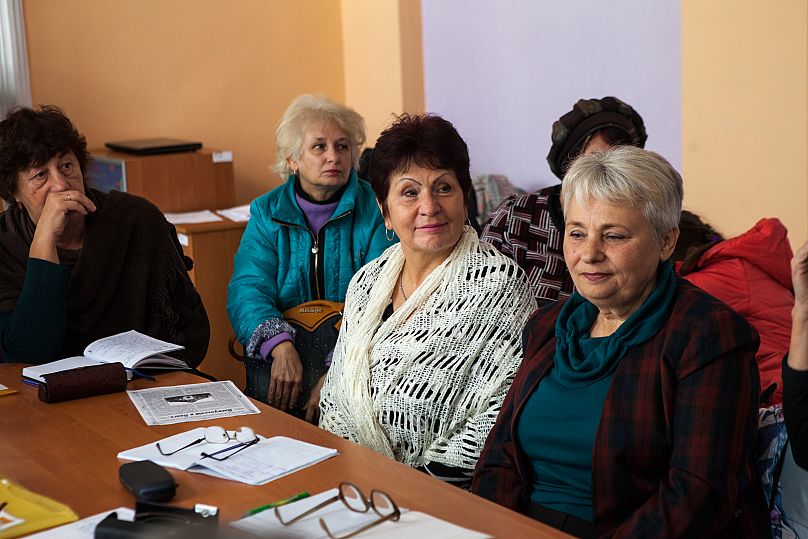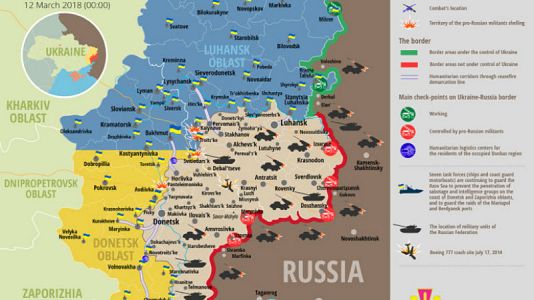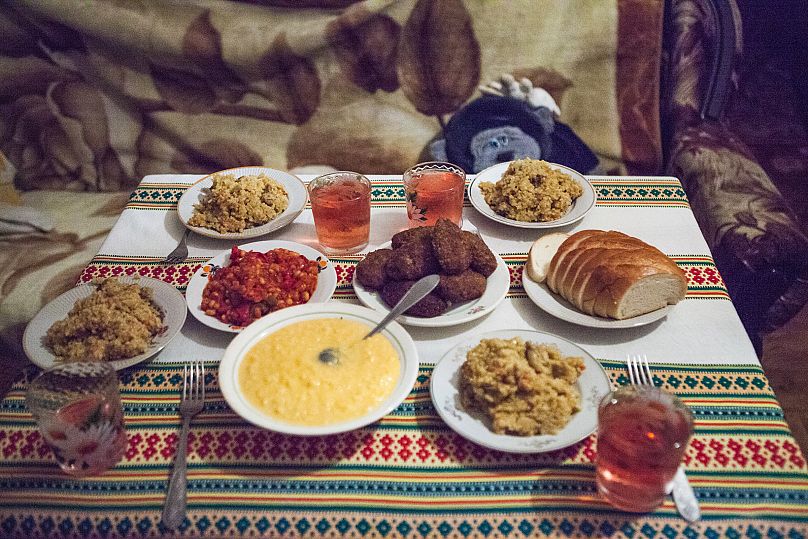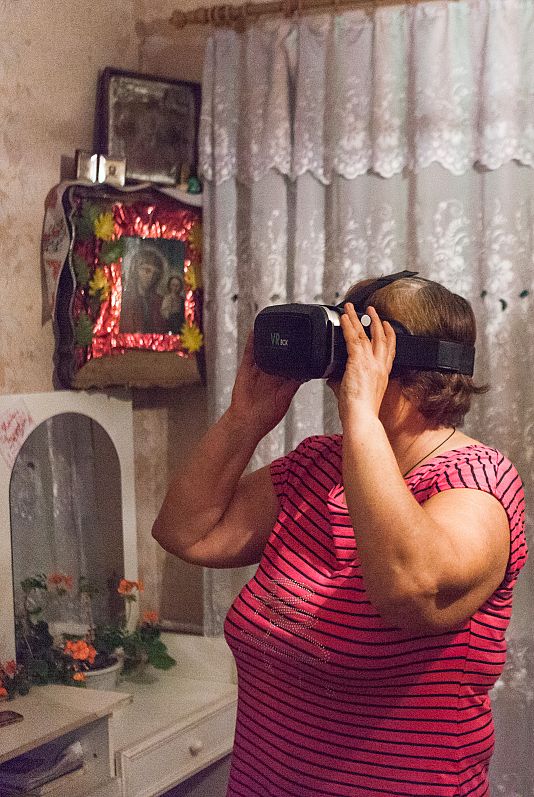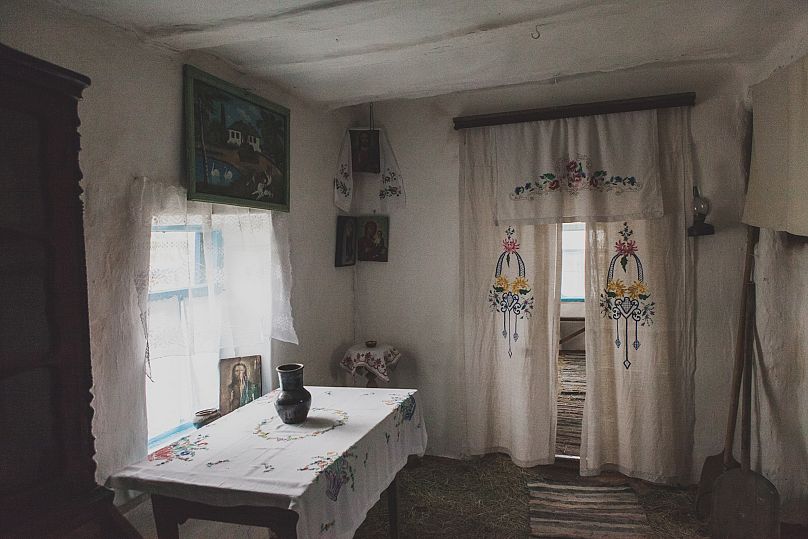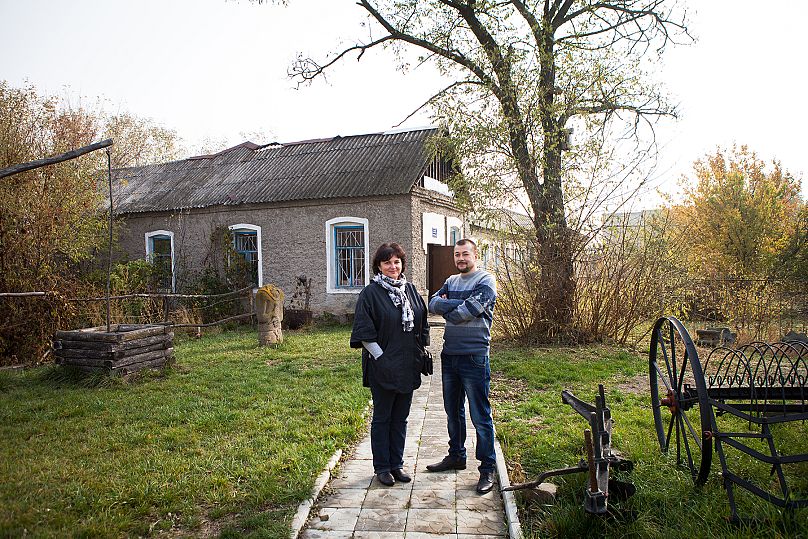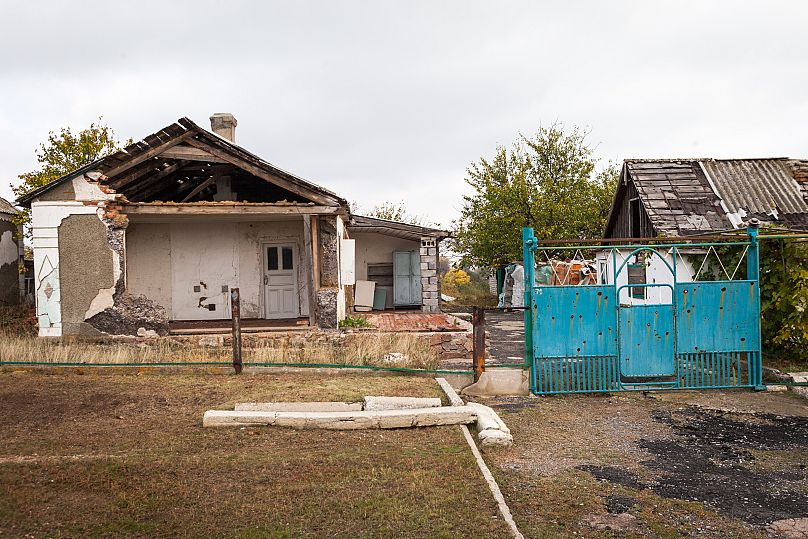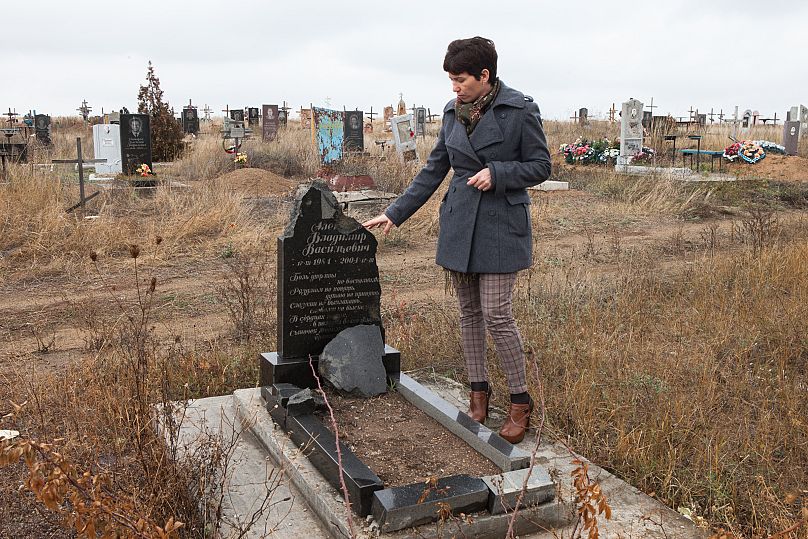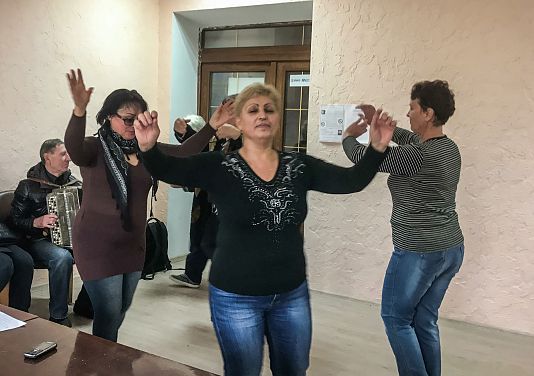Communities at the heart of the conflict in eastern Ukraine are facing down hardship with remarkable resilience. Armed with her camera, Euronews' Nataliia Liubchenkova travelled to Donetsk finding yoga classes for pensioners and sheep shearing for tourists.
Communities at the heart of the conflict in eastern Ukraine are facing down hardship with remarkable resilience. Armed with her camera, Euronews' Nataliia Liubchenkova travelled to Donetsk region finding yoga classes for pensioners and sheep shearing for tourists.
On the railway station platform of the eastern Ukrainian town of Sloviansk, I meet Yana Synytsia. “I have a surprise for you,” she beams.
I know Yana from my previous trips to this war-torn region. She is from separatist-controlled Donetsk and was displaced by the fighting in the region. This time she is my travel companion as I return to record new stories of the local communities’ resilience in the conflict that has dragged on for the last four years.
A short time later I am introduced to a dozen retired local women who are drinking tea, reciting poems and browsing Facebook on a huge screen hanging on a wall. They tell me they often travel together to explore the most interesting destinations in the region. Sometimes they venture further; to western Ukraine. Together they also go Nordic walking, do yoga classes, and learn English or how to use computers.
“My self-esteem grew so much”, says one woman called Halyna. “I live with my family of 6. Now they say, ‘Grandma is busy on Saturday, she has her English class!’ And I feel like my wings have spread. Before, I was only a kitchen maid for them.”
The local activist Natalia Bondarenko is the face behind the initiative. Her organisation, ‘The age of happiness’, has made it its mission to add colour to the life of local pensioners, many of whom have been affected by the war.
Natalia Remenyuk is another one of the women that take advantage of the activities on offer. She dropped into depression after losing her son, a soldier, in the conflict. Joining the group slowly helped lift her out of it, she says.
“I was in a trance after I lost my child but Natalia and the other women started bringing me out of it step by step. I have even begun seeing myself differently, started putting a bit of makeup on. I really like these meetings, I always wait impatiently for the next one to come.”
“Our lives were all the same day in and day out and now there are so many things happening. My life has changed totally,” says another woman. Many others chime in, interrupting each other with memories of the trips they made together, of the places they have seen, and the new local foods they have tried.
There are no similar initiatives offered by the state. As their western European peers often take the chance to relive their youths in retirement, having an active social life is still considered bizarre for Ukrainian pensioners. Most of these women say their family first eyed the organisation with suspicion, some even wondering if it could be a sect. Now, their families have all been won over as it proved to be so transformational to the women's lives.
The situation across the region is very different for different communities, primarily depending on their distance from the front line.
Besides the International Commitee of the Red Cross (ICRC), almost no other international humanitarian missions are able to work in the territories occupied by the pro-Russian separatists. In the territories that were regained by the Ukrainian army, people often survive thanks to the aid of international humanitarian groups, churches and volunteer initiatives.
The villages located closer to the front line on both sides of the so-called “contact line” remain under direct impact of shelling. The access of humanitarian missions, basic medical help or even firefighter services can be limited. Electricity and water supply is often cut.
Rebuilding should be a part of any peace process, say humanitarian missions to the region. But it often takes years to be done in many cases either by the people themselves, sometimes with the help of international grants.
In the village of Oleksandro-Kalynove, located just some 40 kilometres from the contact line, Svitlana Sozanska serves us her home-cooking.
Her toilet is in a wooden cabin in the yard. Even though she lacks such a basic amenity in her house, her internet connection works amazingly well. We brought Virtual Reality glasses and Svitlana tries them on. As panoramic views of places in the region she has never had the chance to visit flick past, she exclaims with utter delight.
Oleksandro-Kalynove has seen more visitors before. The village itself became a tourism brand here in the times before the war. People from industrial cities nearby used to come for an authentic experience of ‘peasant life’: enjoying the local cuisine against a beautiful landscape.
“Our village is very well located,” says Andriy Taraman as we stand outside the village museum opened and run by locals. “We’ve got the Kleban Byk landscape park just nearby. This means a lot in an industrial area like hours. We organise festivals, and run a sheep farm where tourists can try out shearing. We have a mountain, where we built a chairlift. We had families traveling here from Donetsk to snowboard.”
Since the beginning of the war, the flow of tourists dried up—the road from Donetsk is almost empty.
Nevertheless, villagers maintain the museum, with all its carefully assembled exhibits from different historical epochs and even restored a 19th century cottage.
Years into the conflict that changed the region so dramatically, Andriy looks tired. He was drafted into the army early on and lost some of his closest friends. Despite the hardship he has faced, he remains hopeful. Ideas for how to transform the community one again abound and as soon as peace returns, he is confident the village will once again flourish.
Getting even closer to the front line, we enter the village Hranitne. Dozens of abandoned houses damaged by shelling line its empty streets.
This is the so-called ‘red zone’, the borderline running between separatist-controlled and government-controlled areas defined by the Kalmius river. The village lies on its banks.
Hranitne was founded in 18th century by Urums, Turkic-speaking Greeks from the Crimean peninsula. After the Second World War some Crimean Tatars joined. There is a functioning mosque in the town and a Muslim cemetery.
It is relatively safe here now but the situation in the village remains tense. The last time a building was hit by a missile is only a few weeks ago.
Most of the damage, though, dates back to 2014 and 2015. Roofless buildings continue to decay as there are simply no funds for reconstruction.
“During all of 2014 and 2015 we were constantly shelled. The rooftop of the medical centre was completely destroyed. It was also housing the library, and a music and arts school for children. We restored the rooftop by ourselves in the second half of 2016. The building had no heating. Today the Red Cross is doing the renovation here. There were no windows. Now we put them back thanks to the help from charity organisations,” explains the head of the village council Vasylyna Nikolayeva.
Several locals lost their lives to the conflict, including children. Access to one of the cemeteries was only restored recently. The sites were closed for security reasons as missiles hit the new and often-visited graves of victims of the war.
The contrast between personal tragedies suffered by so many and their desire to rebuild what has been lost is what is most striking in this village.
In Hranitne, I see two local bands. They perform in three languages; Turkic, Ukrainian and Russian.
Nikolaeva says the local administration is focused on developing places that offer leisure activities and help to the most vulnerable. The village has both a children's choir and a club for pensioners.
Events take place in a local club, but visitors are careful to steer clear from one of its walls damaged by shelling in 2014. Repair works have started on the building, but for now the destroyed roof is a priority.
Nataliia Liubchenkova is exhibiting her photo series 'Donbass: beyond the headlines' in Berlin from 16th of March to the 31st of March. Catch it at Konrad-Adenauer-Stiftung Akademie.












